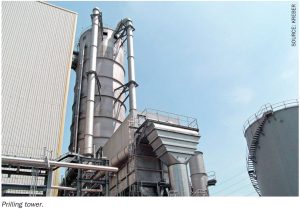
Sulphur fertilizers – the processes, the products
UreaKnowHow.com reviews the main production options for incorporating sulphur into urea, the world's most widely applied commodity fertilizer.

UreaKnowHow.com reviews the main production options for incorporating sulphur into urea, the world's most widely applied commodity fertilizer.

India India has imposed five-year anti-dumping duties on six Chinese imports, including insoluble sulphur, mainly used in the vulcanisation of rubber. The move follows an investigation by India’s Directorate General of Trade Remedies (DGTR) last year, following a complaint by Oriental Carbon and Chemicals in March 2024. The period covered by the investigation was from 1st Jan 2023 to 31st Dec 2023, while the injury investigation period ran from April 2020 to 31st Dec 2023. DGTR made a determination that Chinese exporters had been selling the six products at unfairly low prices, adversely affecting the profitability of Indian producers. DGTR says that the duties it has imposed are “aligned with WTO norms” and aim to protect domestic industries from unfair trade practices and address the growing trade imbalance with China. According to the trade authority, the market share of the countries subject to duties “has been significantly increasing” while local Indian industry’s capacities are “lying idle” amid growing demand. n
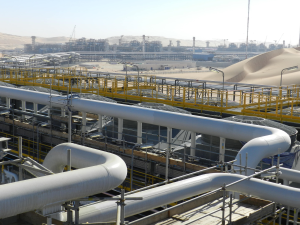
New sulphur production from Chinese and Indian refineries and Middle Eastern sour gas and the ramp up of nickel leaching projects in Indonesia continue to change the direction of sulphur trade.
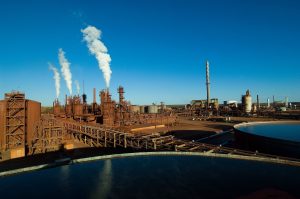
The progressive closure of smelter capacity in Australia poses potential problems for acid consumers across the country.
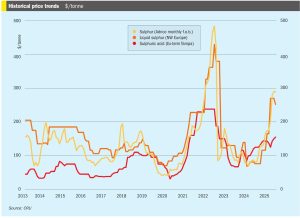
• Global sulphur prices are expected to experience decreases over the next few weeks. Buyers in Asia report that they are covered for contracted supply throughout July, and domestic prices in China are likely to decrease further, putting downward pressure on sulphur prices.

S&P has raised its 10-year production outlook for the Canadian oil sands. The latest forecast expects oil sands production to reach a record annual average production of 3.5 million bbl/d in 2025 (5% higher than 2024) and exceed 3.9 million bbl/d by 2030; half a million barrels per day higher than 2024. The 2030 projection is 100,000 bbl/d (or nearly 3%) higher than the previous outlook. Despite a lower oil price environment, the analysis attributes the increased projection to favourable economics, as producers continue to focus on maximising existing assets through investments in optimisation and efficiency. While large up-front, out-of-pocket expenditures over multiple years are required to bring online new oil sands projects, once completed, projects enjoy relatively low breakeven prices.
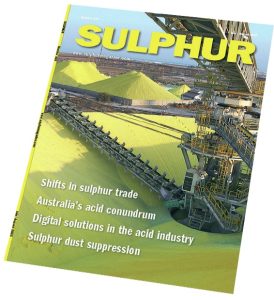
Phosphate prices have been at high levels for a couple of years now, and talk at the recent International Fertilizer Association (IFA) meeting in Monaco was that it was not only continuing to support higher sulphur prices in spite of oversupply in the sulphur market, but that there seemed to be no prospect of it falling in the short term.
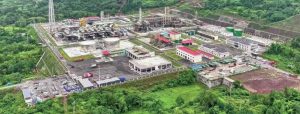
PetroChina has started production at Dukouhe-Qilibei, the last of three major sour gas fields in its high-sulphur Chuandongbei cluster in southwest China. The Dukouhe-Qilibei field’s hydrogen sulphide content reaches up to 17.1%, the highest of any integrated gas field currently in production in China. PetroChina confirmed that commissioning was completed on 30 June, with the Dazhou gas processing plant now running at its full design capacity of 4 million cubic metres per day. The Chuandongbei cluster originally comprised three key sour gas block: Luojiazhai, Tieshanpo, and Dukouhe-Qilibei, and was initially developed under a partnership between Chevron and PetroChina, with Chevron leading the early-phase project development. However, Chevron exited the project in 2020, transferring full control to PetroChina following operational delays and cost challenges. PetroChina says that the completion of Dukouhe-Qilibei solidifies its capabilities in handling high-sulphur content gas fields and marks a significant boost to China’s domestic gas supply, particularly in inland regions with growing industrial demand. n

Northern Nutrients, a manufacturer of enhanced nitrogen sulphur fertilizers, has announced a new ownership structure following an investment by Shell Trading Canada. Shell Trading Canada has invested in expanding Northern Nutrients’ current facility, resulting in the formation of a new joint venture. The expansion will result in a tripling of current capacity of 50,000 t/a to 150,000 t/a of sulphur-based fertilizers. The company’s facility near Saskatoon produces enhanced nitrogen sulphur fertilizers using Shell Thiogro technology. Their flagship product, Arctic S, is 11% nitrogen and 75% micronised elemental sulphur. Northern Nutrients says that its collaboration with Shell underscores their shared dedication to providing retailers and farmers with high-quality and efficient fertilizers and meet the growing demand for innovative fertilizer products.

TotalEnergies has awarded the China Petroleum Engineering & Construction Corporation (CPECC) the engineering, procurement, supply, construction and commissioning (EPSCC) contract to build its new Ar-Ratawi gas processing plant in Iraq. CPECC subsidiary China Petroleum Pipeline Engineering will build two midstream gas pipelines connecting the Majnoon and West Qurna 2 oilfields to Artawi-based processing plant. The planned gas pipeline infrastructure comprises a 114-kilometre sour gas pipeline built with 26-inch diameter pipes, an 83-kilometre, 20-inch sour gas pipeline, and an 83-kilometre, 20-inch sour gas pipeline. The awards form part of the TotalEnergies-led Gas Growth Integrated Project (GGIP) in Iraq, which is valued at $10 billion.